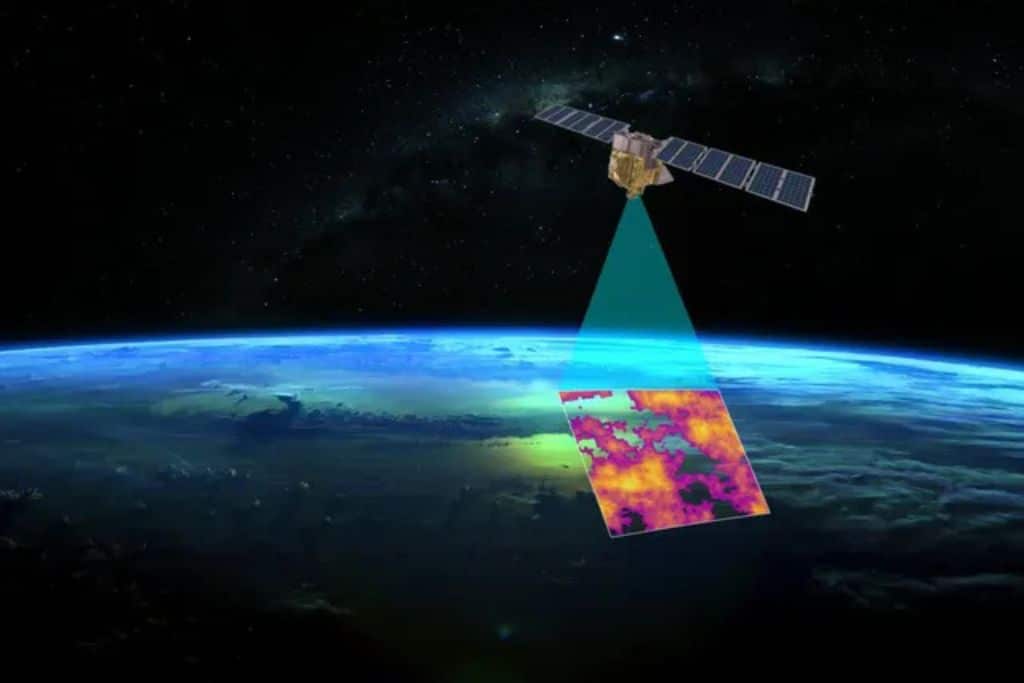This weekly round-up brings you key climate news from the past seven days, including Google’s announcement of a new satellite to track methane and Singapore’s new targets to decrease aviation emissions.
—
1. One in Five Migratory Species Threatened With Extinction, UN Report Reveals
In its State of the World’s Migratory Species report published Monday, the first of its kind, the United Nations Convention of Migratory Species of Wild Animals (CMS) revealed that about 22% of the 1,189 CMS-listed migratory species – more than one in five – are threatened with extinction, while 44% of all CMS-listed species are showing population decline. Fish populations are particularly affected, with a staggering 97% of all CMS-listed fish threatened with extinction.
Migratory species are animals that regularly move between different habitats or regions during specific times of the year, often in search of food, breeding grounds, or better environmental conditions. They play a crucial role in maintaining the balance and biodiversity of ecosystems by facilitating pollination, seed dispersal, nutrient cycling, and providing a source of food for other species, making their conservation essential for a healthy and functioning environment.
Read more here.
2. Google Announces New Satellite to Track Global Methane Emissions
The satellite, MethaneSAT, will orbit the Earth 15 times per day, surveying methane levels over the world’s largest oil and gas regions. The information collected will be processed through algorithms powered by Google Cloud and by the end of the year, the company expects to have data mapped for the whole world to see.

Methane is a major contributor to the total greenhouse gas (GHG) emissions – second only to carbon dioxide (CO2) – and it is responsible for about 30% of global warming. Though CO2 is more commonly and widely discussed, concerns about methane emission should not be ignored. Indeed, the gas is considered 84 times more potent in trapping the heat than CO2 over a two-decade period and it possesses a global warming potential 25 times more than that of CO2.
Read more here.
3. Millions of Africans at Risk of Food and Energy Insecurity, Poverty as Climate Crisis Advances, New Report Finds
More than 200 million Africans could face extreme hunger and undernourishment in the long run as extreme weather events impact crop yields and farmland value. Indeed, agricultural production in Africa could experience losses of up to 2.9% by 2030 and 18% by mid-century, the study suggested, while the value of farmland to drop anywhere between 36% and 61%. While estimates are not conclusive for other developing regions, researchers say rain-fed crops will suffer the most.
Besides food security, climate change is also expected to deepen poverty in the world’s poorest regions. In Africa, the average per capita gross domestic product (GDP) is projected to drop by 7.1% in the long term, while country-level losses are much higher, estimated between 11.2% and 26.6% of GDP. Across the continent, poverty is expected to affect households that work in the agricultural sector the most, with revenue from crops likely to drop by 30% and poverty expected to rise anywhere between 20% and 30% when compared to a no-climate-change scenario.
Read more here.
4. Singapore to Impose Sustainable Fuel Targets on Outbound Flights From 2026, With Travellers Expected to Cover Costs
Speaking on the eve of the Singapore Airshow, transport minister Chee Hong Tat said that at least 1% of the jet fuel used in outbound flights from Changi Airport and Seletar Airport starting in 2026 will have to be SAF, with plans to raise it to 3-5% by the end of the decade subject to fuel availability.
As a consequence of the target, travellers are expected to pay higher air fares. Passengers flying to Bangkok, Tokyo and London might have to pay an additional S$3 (US$2.23), S$6 (US$4.46) and S$16 (US$11.88), respectively, according to the Civil Aviation Authority of Singapore (CAAS). The cost will be higher for premium class passengers.
SAF, an alternative fuel source derived from a variety of feedstocks instead of polluting sources such as oil, coal, or gas used to produce traditional jet fuel, is a key factor in reducing emissions from the aviation sector, which currently accounts for 2% of global carbon dioxide (CO2) emissions and 12% of global CO2 emissions from transport. SAF feedstock sources range from cooking oils and municipal waste to food scraps and energy crops.
Read more here.

















